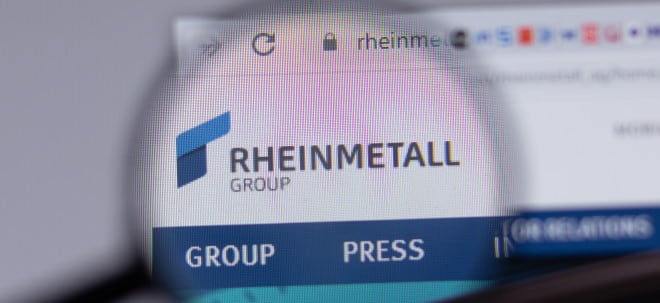DeSciX Announces Arrival of the World's First Hyper Computer FRAQTL
Arrives in Open-Source - April 3, 2025
Shatters Barriers in Quantum Simulation, AI, and the P=NP Problem
NEW YORK, April 3, 2025 /PRNewswire/ -- Hardware-based quantum computers, still decades away, were only hoped to simulate between 50 and 100 quantum particles. Using an unpublished theorem of an MIT mathematician (lost to the world by his untimely death), an inventor in Pennsylvania has proved some of Einstein's previously discredited theories are actually correct, and, as a result is simulating billions of quantum particles on commercial off-the-shelf computer chips – right now.
Essam Abadir is introducing the FRame And QuanTum Language virtual machine for physics computation (FRAQTL VM) - the world's first Hyper-Computer which exceeds the capabilities of the best possible theoretical superposition-based quantum computer.
While companies pursue hardware quantum supremacy, FRAQTL offers a radical alternative: surpassing quantum hardware entirely by operating on readily available classical computing hardware. In other words, with FRAQTL the hyper-computing future is already here. And it is open to all.
This groundbreaking technology is now available for public inspection, on your PC, open-source as part of the EGPT (Electronic Graph Paper Theory) project atwww.DeSciX.net. Released as blockchain-based decentralized science (DeSci), open-source at www.DeSciX.net and the Polygon blockchain. Researchers, developers, innovators, and the existentially curious are all invited to join this community revolution in computing, physics, artificial intelligence, and philosophy.
"Hardware-based quantum computing was heralded as the future. The FRAQTL Hyper-Computer is leap-frogging quantum before it even arrives," explains inventor, Essam Abadir. Hypercomputing not only unlocks all the dreamed-of capabilities of quantum computing, like computing cold fusion, exponentially better modeling of financial markets, or individually designed cancer drugs, it also opens up whole new paradigms like general artificial physical intelligence (GAPI). Technologies like this and AI are so important to our future that there is a moral obligation to the public good. They should not be owned by a single government or company but rather accessible to all."
Computing An "Impossible" Quantum Problem, In Your Web Browser
Nobel physicist Richard Feynman inspired the very field of quantum computing and famously stated about the double-slit experiment (DSE), "We choose to examine a phenomenon which is impossible, absolutely impossible, to explain in any classical way, and which has in it the heart of quantum mechanics. In reality, it contains the only mystery." Feynman's inexplicable in a "classical way" means that no classical digital computer, no matter how powerful, could ever replicate it.
Where simulating just a handful of photons previously demanded insurmountable computing power, FRAQTL now computes what Feynman said was "absolutely impossible." Everyone is invited, directly in their web browser, to not only explore a real-time DSE simulation with thousands of photons but also the very few lines of source code which power it.
Giving AI the Ability to Imagine
While the world fixates on AGI driven by LLMs, a growing focus is now on AI "world models." With an AI world model, FRAQTL's hyper-computing unlocks something potentially more fundamental: General Artificial Physical Intelligence (GAPI) and the ability for computers to imagine the future state of things. Physics and science is fundamentally a pursuit of imagining or predicting what will happen next given what you know now. GAPI is a new paradigm that allows computers to realistically "physically imagine" the future the way humans do, envisioning situations without first experiencing them. Unlike LLM's which can only predict off of past data, GAPI allows computer imagination without massive data sets.
Imagine:
- Robotics: Robots autonomously adapting to unforeseen scenarios, such as navigating a complex, previously never performed surgery.
- VR/AR/CGI: Creating truly immersive, previously never experienced realities - such as walking on Mars - where the virtual and physical worlds indistinguishably merge.
- Autonomous Vehicles: Autonomous vehicles seamlessly navigate any terrain and proactively anticipate unpredictable events.
- Security: Security systems anticipate threats and adapt to challenges, exceeding the limits of conventional security measures.
- Product Design: A.I. systems which understand the physical user experience and create unique consumer products.
The Science Behind EGPT & FRAQTL: Entropy as Nature's Computer Code, Solving P=NP
EGPT challenges conventional physics by assuming Einstein was correct about quantum mechanics being incomplete and that the universe is fundamentally digital, not continuous. By showing that two famously unsolved science problems, P=?NP and quantum gravity are really the same problem, FRAQTL solves them by replacing calculus with combinatorics ("balls into boxes") and fractal recursion, mirroring graphics engine techniques (e.g., quadtrees). This approach puts quantum "balls" into gravitational frame "boxes."
FRAQTL rests on rigorous mathematical proofs (previously ResearchGate pre-print, now at DeSciX.net with AI agents trained on their content):
- Quantum Computing vs. Fractal Compression In A Chaotic Discontinuum: Introduces N-Body fractal computing Language for chaos-inducing gravitational relativity FRAmes around QuanTum mechanics (FRAQTL). Presents Einstein-Newton Laws framework, formal proof fractal compression is the language of physics in a digital universe, and provides classical explanations for quantum superposition and entanglement.
- Without Attraction, You've Got Nothing: Brings gravity into quantum mechanics. Gives formal proof of gravity completing quantum mechanics and of Einstein's EPR argument that quantum mechanics is incomplete. Full discrete derivation of Planck's Law under quantum gravity as proof of EGPT's emergent physics, proposes fractal discrete divisibility of quanta (energy units or "dark matter"), and suggests a plausible unification of fundamental forces, MOND, and the holographic principle as consequences of fractal scale-invariance.
- P Probably Equals NP: Formal proof of P=NP as a rapid probabilistic convergence as system size grows - hence the reference to "probably equals". First maps physics entropy onto digital Shannon Entropy using Rota's Entropy Theorem, and secondly maps onto NP-Complete SAT with a polynomial time solution in O(N log N) by Shannon's Coding Theorem. The inventor learned of Rota's theorem in 1993 from his MIT professor Gian-Carlo Rota. Rota sadly passed away in 1999 and the theorem was consequently unpublished.
- The Entropy Game: Explores concepts in P=NP and physics computability by mapping between entropic and NP-Complete forms.
- Patent Application & Open Source FRAQTL VM: Details the background and implementation of physics computation using a fractal recursive algorithm, similar to graphics engine implementations.
About Essam Abadir – The Inventor Focused on Giving Computers the Ability to Make Pictures of the Future
As an entrepreneur who exited a mobile apps development platform to Intel in 2013, Essam Abadir later founded the impact investment Aspire Ventures Precision Medicine Fund with Penn Medicine LGH. Essam's R&D industry research focus has been on AI algorithms particularly as it relates to computer vision and computation of physical systems. He is an inventor with a broad range of patents in fractal compression, crypto wallets, high performance distributed computing, and healthcare applications. As a financial engineer and lawyer, Essam's vision at Aspire was to foster an AI and blockchain healthcare ecosystem. His approach is to align incentives for societal and financial returns - via DeSciX and decentralized open platforms, this is a continuing endeavor he seeks to make self-perpetuating and to expand across multiple fields. His credits also include: SB Mathematics MIT, SB Operations Research MIT Sloan, JD with Distinction University of Iowa, and member emeritus of the NY Bar Association.
Media Contact
Michael Schmid
Cre8tive Logic, Inc.
Phone: +1 717.718.2281
Email: mschmid@cre8tivelogic.com
Website: www.DeSciX.net
Community: discord.gg/descix
Patch Canada
703-727-4439
![]() View original content to download multimedia:https://www.prnewswire.com/news-releases/descix-announces-arrival-of-the-worlds-first-hyper-computer-fraqtl-302419412.html
View original content to download multimedia:https://www.prnewswire.com/news-releases/descix-announces-arrival-of-the-worlds-first-hyper-computer-fraqtl-302419412.html
SOURCE DeSciX


